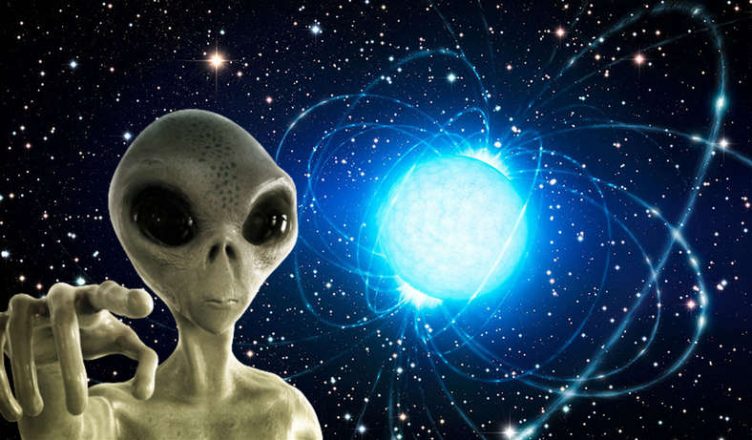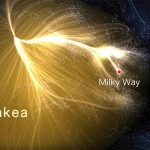Contact Request from Extraterrestrials? Earth has been receiving mysterious and regular signals for 35 consecutive years. What could they be? A study titled “A long-period radio transient active for three decades” published in the renowned international journal “Nature” sheds light on this matter. Researchers have discovered that, since at least 1988, a mysterious extraterrestrial source has been continuously emitting radio waves towards Earth at a regular interval of 22 minutes.
However, researchers do not yet know the origin of these mysterious signals, as the characteristics of their radio waves do not align with any known theories or models in the world. Currently, this type of pulsed signal we observe is collectively referred to as “Fast Radio Bursts” (FRBs).
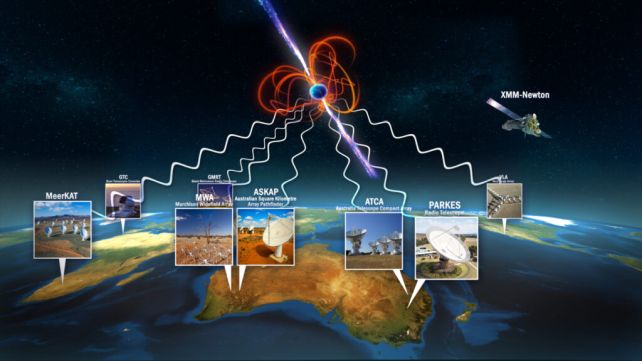
Fast Radio Bursts
Starting in 1987, some radio telescopes on Earth began detecting brief and intense radio wave pulses originating from distant cosmic sources, known as Fast Radio Bursts (FRBs). These FRBs have extremely short durations, typically only a few milliseconds, yet they can release energy equivalent to what the Sun emits in an entire day.
The origin and physical mechanism of Fast Radio Bursts are still unclear, and there are various theoretical models to explain them, such as neutron star mergers, magnetar flares, supernova remnants, black hole collisions, and more. Fast Radio Bursts come in two types: single bursts and repeating bursts. Single bursts occur only once, while repeating bursts appear multiple times at the same location.
Among the detected Fast Radio Bursts, the majority are single bursts, with fewer than 10 cases of repeating bursts. One particularly intriguing repeating Fast Radio Burst is known as GPM J1839−10, located approximately 15,000 light-years away from Earth.
GPM J1839−10 has a pulse period of 1320 seconds (22 minutes), with a 400-second window during which the burst lasts for 30 to 300 seconds. The pulse brightness of GPM J1839−10 is approximately 0.1 joules per hertz, equivalent to the Sun’s brightness in the radio wave spectrum.
The pulse signal from GPM J1839−10 dates back to as early as 1988, making it the longest-known-lived radio transient source to date. What is the connection between this 30-year long-period radio transient activity and Fast Radio Bursts?
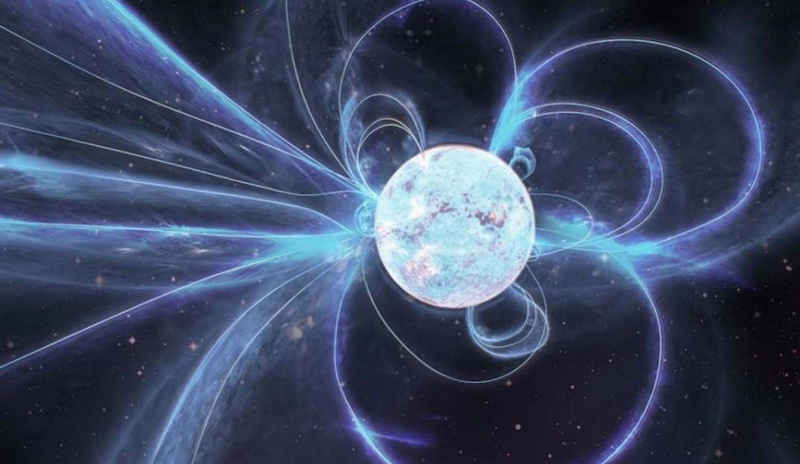
High-Energy Astrophysical Phenomena
Similarities exist because both are high-energy astrophysical phenomena characterized by transient radio wave pulses originating from extragalactic or cosmological sources. Fast Radio Bursts, in particular, exhibit the following key characteristics:
- Duration: Fast Radio Bursts typically last from a few milliseconds to tens of milliseconds, with the shortest bursts being as brief as 0.3 milliseconds and the longest not exceeding 30 milliseconds.
- Dispersion Measure: The dispersion measure of Fast Radio Bursts refers to the time delay of radio waves arriving at Earth at different frequencies, reflecting how many free electrons the radio waves encountered during their propagation. Fast Radio Bursts often have dispersion measures in the hundreds to thousands, far exceeding the contribution from the interstellar medium of our galaxy, indicating extragalactic or cosmological origins.
- Brightness: The brightness of Fast Radio Bursts refers to their radiation intensity at a specific frequency, reflecting the amount of energy they release. The brightness of Fast Radio Bursts typically falls in the range of hundreds to thousands and is one of the brightest known radio astrophysical phenomena.
- Polarization: Polarization in Fast Radio Bursts refers to the regularity of the orientation of radio wave vibrations, indicating their radiation mechanism and propagation environment. Fast Radio Bursts can exhibit both linear and circular polarization, with some showing high polarization and others lacking clear polarization.
- Spectra: Spectra in Fast Radio Bursts refer to the distribution of radiation intensity at different frequencies, reflecting their radiation range and features. The spectra of Fast Radio Bursts can be either smooth or structured, with structured spectra showing peaks, valleys, or periodic variations.
Single Bursts and Repeating Bursts
Single Bursts: Single bursts are observed only once and are not seen again, representing the majority of detected Fast Radio Burst samples. They may result from one-time or irreversible events such as neutron star mergers or black hole collisions. Single bursts often exhibit lower dispersion measures, higher brightness, weaker or no polarization, and smoother or irregular spectra.
Repeating Bursts: Repeating bursts are observed multiple times at the same location and represent a minority of detected Fast Radio Burst samples. They may result from events that are repeatable or reversible, such as magnetar flares or pulsar storms. Repeating bursts often exhibit higher dispersion measures, lower brightness, stronger or regular polarization, and structured or periodic spectra.
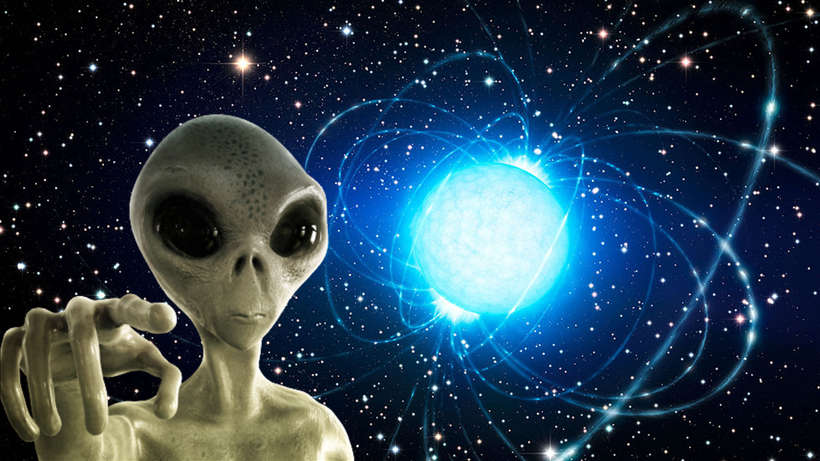
Signals from Extraterrestrials?
From a scientific perspective, regular radio bursts are more likely to be generated by natural astrophysical processes rather than designed by intelligent life. On one hand, the periodicity of these regular radio bursts is not entirely stable but exhibits some variation and uncertainty. If they were signals sent by extraterrestrials, they would likely have a more precise and fixed timing pattern.
On the other hand, the spectra and polarization of these regular radio bursts are not entirely smooth and regular but exhibit some structure and variation. If they were signals sent by extraterrestrials, they would likely have a simpler and clearer information encoding method.
Furthermore, the environments in which these regular radio bursts originate are not conducive to the existence and development of intelligent life. For example, FRB 121102 is located within a dwarf galaxy that may have recently experienced star formation activity and supernova explosions. FRB 180916.J0158+65 is located within a spiral galaxy that may contain a medium-mass black hole or a dense star cluster. These environments have extreme temperatures, densities, magnetic fields, and radiation, which are not favorable for the survival and communication of intelligent life.
In Conclusion
Therefore, regular radio bursts are more likely to be generated by some form of astrophysical mechanism, such as rapidly rotating, high-magnetic-field neutron stars known as magnetars. Magnetars undergo periodic strong magnetic field reconfigurations, causing intense vibrations and fissures on their surfaces and outer layers, which can result in Fast Radio Bursts. The rotation period and orbital period of magnetars may influence the frequency and intensity of their magnetic field reconfigurations, leading to a certain level of periodicity in their Fast Radio Bursts.
While GPM J1839−10 may not be a signal from extraterrestrial beings, it is undeniable that the universe is vast, teeming with countless civilizations and planets. Humans continue to advance their technology to search for extraterrestrial life rather than wait for them to discover Earth.
More UFOs and mysterious files, please check out our YouTube channel: MysFiles
The Day After Roswell – UFO secrets and Reverse Engineering
